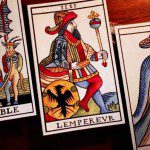Around this time of year I see a lot of pagans fussing about Christmas, one way or another. Whether it’s the (largely misguided) belief that Christmas Was Stolen From The Pagans or the concern about whether or not they are Betraying The Gods Or Something by still finding value in the traditions of the holiday, there is a lot of angst and ink spilled on the topic.
There has never been a convert to a new religion who didn’t carry something with them, I figure. Whether that something is traditional food for an old holiday, adapted to a new, or a set of customs, or some particular decorating habits, or whatever else, we cannot be where we are without giving due honor to where we have been. So the traditions carry on, and mutate, and become new things, continuations of the old ones.
There are a lot of traditions that I’ve maintained from my childhood Christmases, adopting them into my own sense of what is a necessity in this festival: there are food traditions, and decoration traditions, and commemoration traditions, and so on.
One of the traditions that I had let lapse, which I picked up this year now that Oldest was old enough to appreciate it, is the ritual reading of A Christmas Carol by Charles Dickens.
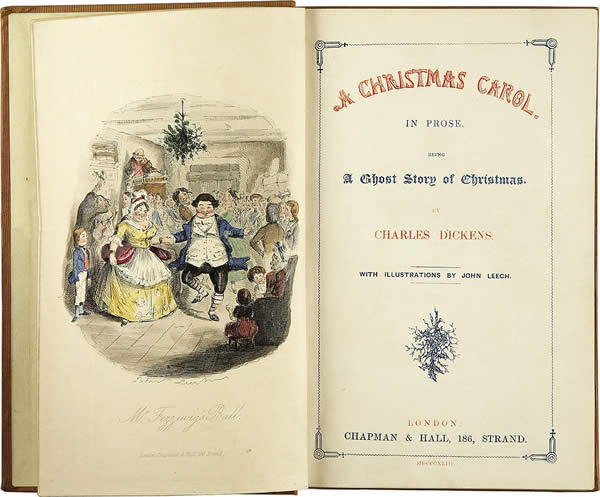
I don’t know when this tradition started. All I know is that as far back as I can remember, my father would take out the book and read it, a chapter a night. For a while it was “When do we start?” but we eventually realised that we start it up on the usually-solstice in order to finish on Christmas morning. Which of course set us up for a long day of watching various movie versions of it – my favorites are The Muppet Christmas Carol, which is the most accurate-to-the-book rendition (I am NOT JOKING), and the musical Scrooge. My father is prone to mixing up a vast batch of smoking bishop punch for the holidays, which is the sort of thing that one has to be a really dedicated fan to catch as a reference.
But every year we would curl up before bedtime, and the book would be that one, like slightly off-kilter clockwork, and we would read it – eventually each of us had a different edition, since my father collects them, and we kids would bicker over who got the one with the best pictures – and Dad would read the version with the vast quantity of footnotes for all the cultural references we didn’t get because the thing was originally published a century and three quarters ago.
There are so many things here to contemplate, that are perhaps why the value continues, why even before I was reading it to my children myself, I would call Dad up on the twenty-first of December so that we could greet each other with “Marley was dead, to begin with.” To enumerate a few: the concept of family tradition, of the ways that we do things, the things that are important to us as a small group, even if they are not a part of what everyone else cares about; the process of the re-enchantment of Scrooge, with the benevolent and terrifying influence of the unseen world working its will upon him; the richness of the language, the images it creates, the world that is so different and so not so different than the one I knew.
But one of the things that I come back to is that this story was a huge part of creating my moral universe.
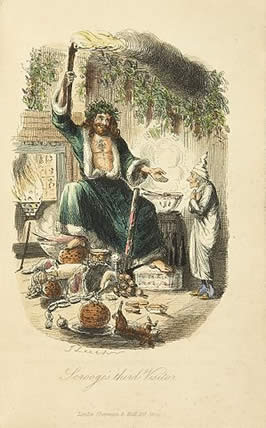
This is hardly a surprise; Dickens’s writing is not subtle in its didacticism, and A Christmas Carol is not exactly oblique in its lesson. (It is perhaps hard to write a story about a man learning his lesson without having the lesson itself wind up front and center.) But this book, with its heavy-handed moral message, was one which we came back to again and again, one which we explored regularly, learned about, not so much studied as iterated through ritually, placing its substance at the center of the tail end of the halfheartedly-acknowledged Advent season.
This is one of the purposes of liturgical ritual, to give the year shape, and to use those shapes to create certain effects in people. Here, like an ancient lector priest, I go back again and again to the words, holding the book containing them and speaking them out, even the ones that I have memorised or at least half-memorised. Hearing the story shaped me, and one of the ways it shaped me is that I value retelling the story myself, the tradition of it, the weight of it, and I read it to the children, so that it might shape them in similar ways.
This is what a tradition is, this is what a tradition is for.
And here we have a shape: an interesting counterbalance to my childhood’s Christmas greed, this entire story around the idea that abundance is empty, is unsustaining, if it is not shared, that it dies if it does not flow. We have joyousness and pleasure and warmth set against chill, isolation, and avarice, and these are things that can become a part of a moral compass, invoking a compassionate spirit.
This is how things are done in my family. We create ourselves with stories.
I read A Christmas Carol to my children, though only the oldest really stuck around for it. I read it, and watched her ask a few questions, earnest ones, like, “Why is Tiny Tim sick?” and ruminate on the answers, I read it and watched her correctly identify the little plot twists and be proud of herself for understanding the story. I read it and she asked me to read the last chapter again, never mind that I have a sore throat. And I told her that Dad would be coming up to visit soon, and would she like to watch movie versions of it with him, and she, unsurprisingly, would.
I read it and find bits of it embedded in me in ways that I had not contemplated before, the presence of the thick, dingy fog turning up as a critical plot element in a story I’m writing. And I read it and found myself responding in ways that I did not know how to before, as a parent with a small child, reacting to parental grief. This is down in my bones, this story, in ways that are complex and unfathomable.
This is our tradition, in my family, passed down from my father, in the process of being passed on to my children.
And it’s not about religion – the explicit religious content in A Christmas Carol is quite minimal – but it is about Christmas.
And perhaps it is about religion, because of the way it informs and shapes who I am and how I approach the question of spirit. Or Spirits.
It is about ritual, and about the way a story can be told to make a person become the sort of person who tells that story. By our words we are created.
God bless us, every one.
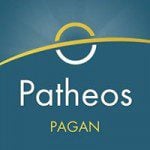
Patheos Pagan on Facebook.
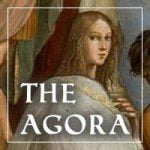
the Agora on Facebook
Hills of the Horizon is published monthly on the 29th here on the Agora. You can subscribe by RSS or via e-mail.
Please use the links to the right to keep on top of activities here on the Agora as well as across the entire Patheos Pagan channel.


